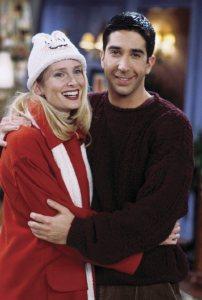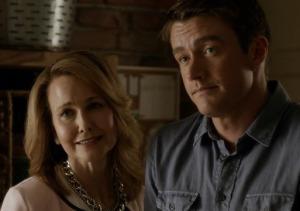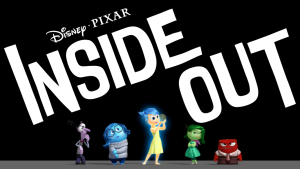Well, shut my mouth. The moment I heard the premise of Pixar’s new “masterpiece” Inside Out (that’s not me calling it a masterpiece; that’s NPR, io9, The Daily Beast, etc.) I assumed it was at least vaguely related to the old Fox sitcom Herman’s Head. Oh, really, Pixar, you’re going inside the mind of an 11-year-old girl to visit the personifications of her primary emotions – Joy (Amy Poehler), Sadness (Phyllis Smith), Fear (Bill Hader), Disgust (Mindy Kaling) and Anger (Lewis Black), all of whom congregate in “headquarters.” In the immortal words of George Harrison as himself watching the Bee-Sharps perform on top of Moe’s Bar on The Simpsons, “It’s been done.”
The year was 1991. The world was just getting to know two little bands called Nirvana and Pearl Jam, arguing over who was better, Kurt Cobain or Eddie Vedder, yet completely agreeing that flannel was a logical fashion choice for any occasion. Terminator 2: Judgement Day added the phrase “liquid metal” to our collective nightmares. And the Gulf War happened. On Sunday nights on Fox, a little TV show called Herman’s Head starred Fright Night and Mannequin 2‘s William Ragsdale as the titular research assistant working as a fact-checker at a magazine publisher. It was an otherwise unremarkable workplace sitcom, with Herman seeking to please his eccentric boss and keep the peace with his two female co-workers, one bitchy (Jane Sibbet), one nice (Yeardley Smith). Hank Azaria was even around as Herman’s womanizing best friend Jay. But that was really only half of the show. Just like Inside Out, the main attraction was delving into Herman’s head (so that’s where the title came from) to hang out with four characters representing his intellect (Peter Mackenzie), fear (Rick Lawless), compassion (Molly Hagan), and lust (Ken Hudson Campbell), who hang out in a large attic-like room filled with random junk and filing cabinets for things like memories.
But why am I explaining all of this? Herman’s Head eventually got one of those Quantum Leap-esque opening credits sequences which laid everything out for you:
This only lasted 3 seasons, and Hank Azaria has admitted it wouldn’t exactly go on his career highlight reel. However, it was notable at the time because when it began its first season The Simpsons had only been around for two years. So, unless you’d already seen The Legend of Billie Jean the first time many people saw what the voice of Lisa Simpson, Yeardly Smith, looked like was on Herman’s Head. To be honest, until writing this article I had completely forgotten that Azaria was on the show as well, which is another Simpsons connection. Plus, Mannequin 2: On the Move came out the same year that Herman’s Head premiered meaning William Ragsdale was having a bit of a pop culture moment. It didn’t last.

Jane Sibbet went straight from this to playing David Schwimmer’s ex-wife Carol throughout the entire run of Friends.

Molly Hagan is now the mom on iZombie
And everytime I saw Inside Out trailers I rolled my eyes and thought, “Why doesn’t anyone else realize they’re ripping off Herman’s Head?”
 Oh, silly me. If only I had done a simple Google search I would have seen that dang near every single pop culture site made that connection, though very few saw it as a negative. It’s not like Herman’s Head is some classic. Plus, the actual motivation behind the movie is far more pure than simply some hankering to bring regrettable 90s television back into our lives.
Oh, silly me. If only I had done a simple Google search I would have seen that dang near every single pop culture site made that connection, though very few saw it as a negative. It’s not like Herman’s Head is some classic. Plus, the actual motivation behind the movie is far more pure than simply some hankering to bring regrettable 90s television back into our lives.
As Inside Out director and co-writer Pete Docter has told many interviewers, in this case Screen Rant:
SR: Bill Hader told me that the way you pitched the film to him was you showed him a picture of your daughter at a younger age, all happy and smiles, and then at 11, a little more sullen…
Yeah.
SR: Let’s talk about that inspiration for the film.
Yeah, those pics, I have one of her being all goofy and she’s got a broken arm and she’s making a funny face. And then when she was 11, she was more kind of like, “Ugh…” I think that rang true for me as a kid. I definitely went through a big change. As a parent, it was really tough, because you don’t want your kid to be sad. Also, personally, I really value the sort of goofy, funny play on the ground with dolls and stuff. That’s gone away. That’s not going to be a part of my life anymore. The story is kind of told from a parent’s point of view, Joy being this surrogate parent. Trying to figure out what’s going on in our kids’ heads is what led to this movie.
SR: One thread of the movie is the child learning to deal with her own emotions, and then the other one is about the parents trying to hold onto to those memories in some way, even though they’re moving in the past. Did it take a lot of work to find the right balance between those two points of view?
I think the big struggle for us was that the film originated in this idea of not wanting your kid to grow up and holding onto childhood and trying to preserve that, knowing full well that it’s impossible to do so. And as the film evolved, it really grew to be about embracing and understanding sadness. At first, those felt like they were at odds and they were fighting each other. We’d dramatized scenes like Joy and the memory dump where those old memories are disappearing. That was talking about the first (theme). And yet, there is other stuff where — I don’t want to give too much away, but those scenes are about the second idea.
So, no, not a rip-off. Plus, there are Eternal Sunshine of the Spotless Mind and Inception-like elements to Inside Out which were never a part of Herman’s Head, but I won’t spoil that for you here because Inside Out is just so dang good.
Source: ScreenRant

